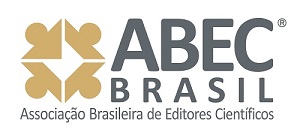ANALYSIS OF THE MORPHEME –ED OF THE SIMPLE PAST OF ENGLISH AS AN ADDITIONAL LANGUAGE: A BIBLIOGRAPHIC REVIEW
Keywords:
Morpheme –ed, Complex Adaptative System, Exemplar Theory, English as an Additional Language, Bibliographic ReviewAbstract
The main objective of this article is to analyze studies on the –ed morpheme production of the simple past tense of regular verbs in English as an Additional Language (EAL). Based on the view of language as a Complex Adaptive System (LARSEN-FREEMAN, 1997; BACCHI, 2015) and on the Exemplar Theory (PIERREHUMBERT, 2001; BYBEE, 2001), the research question was: how do Brazilian learners of EAL perform the simple past –ed morpheme of regular English verbs according to literature? We have as a basic hypothesis Brazilian learners of EAL produce the morpheme –ed in a non-prototypical way with the insertion of epenthetic vowels. The study is a qualitative literature review about the production of the morpheme –ed by Brazilian learners of EAL. Therefore, we selected five quantitative surveys on the production of –ed morpheme and discussed the results in relation to the following variables: experiments; orthography; English proficiency level/EAL usage experience; previous context/voicing; words; and the individual. Based on the results in the studies, we confirmed the basic hypothesis of the study, since Brazilian learners tend to perform vowel epenthesis in the realization of the morpheme –ed due to the influence of the independent variables investigated.
Downloads
References
LARSEN-FREEMAN, D. Chaos/complexity science and second language acquisition. Applied Linguistics, Oxford, p. 141-165, Jun. 1997.
LARSEN-FREEMAN, D.; CAMERON, L. Complex systems and applied linguistics. Oxford: Oxford University Press, 2008a.
BAICCHI, Annalisa. Construction Learning as a Complex Adaptive System: psycholinguistic Evidence from L2 Learners of English. Heidelberg: Springer International Publishing, 2015, p. 09-31.
MORIN, E. Introdução ao pensamento complexo. Porto Alegre: Sulina, 2005.
CRISTÓFARO-SILVA, T. Modelos multirrepresentacionais em fonologia. In: MARCHEZAN, R. C. e CORTINA, A. (Orgs.). Os fatos da linguagem, esse conjunto heteróclito. São Paulo: Cultura Acadêmica, p. 171-185, 2006.
GOMES, M. L. C. A produção de palavras do inglês com o morfema -ed por falantes brasileiros: uma visão dinâmica. Tese de Doutorado. Universidade Federal do Paraná, Curitiba, 2009.
GOMES, M. L. C. Passado regular em inglês: como o brasileiro pronuncia palavras com o morfema -ED. In: BRAWERMAN-ALBINI, A.; GOMES, Maria L. C. (Orgs.). O jeitinho brasileiro de falar inglês: pesquisas sobre pronúncia do inglês por falantes brasileiros. 1ed. São Paulo: Pontes Editores, p. 173-188, 2014.
DELATORRE, F.; GONÇALVES, A. R.; SILVEIRA, R. Production of English verbs ending in -ed by speakers from different L1 backgrounds. Entrepalavras, Fortaleza, v. 10, n. 1, p. 141-165, jan.abr/2020.
DELATORRE, F. The role of orthography on the production of regular verbs ending in -ed by Brazilian EFL learners. In: Anais do IX Encontro do CELSUL. Palhoça – SC, 2010.
GADÊLHA-SILVA, M. Análise Fonético-Fonológica do Past Tense -ed na Produção de Aprendizes de Inglês Língua Estrangeira: Uma Visão Multirrepresentacional. TCC. Universidade Federal Rural do Semi-Árido, Caraúbas, 2019.
ARAÚJO, A. A. de. Análise da realização do morfema -ed por estudantes brasileiros de língua inglesa numa perspectiva complexa da linguagem. Dissertação (Mestrado em Ciências da Linguagem) - Universidade do Estado do Rio Grande do Norte, Mossoró, 2020.
BYBEE, J. Phonology and language use. Cambridge: Cambridge University Press, 2001.
PIERREHUMBERT, J. B. Exemplar dynamics: word frequency, lenition and contrast. In: BYBEE, Joan; HOPPER, Paul (Comp.). Frequency effects and the emergence of linguistic structure. Amsterdam: John Benjamins, p. 137-158, 2001.
CRISTÓFARO-SILVA, T.; GOMES, C. A. Representações múltiplas e organização do componente fonológico. Fórum Linguístico, Florianópolis, v. 4, n. 1, p. 147- 177, jul. 2004.
Downloads
Published
How to Cite
Issue
Section
License
Copyright (c) 2022 Maria Gadêlha da Silva, Clerton Luiz Felix Barboza

This work is licensed under a Creative Commons Attribution-NonCommercial-ShareAlike 4.0 International License.






